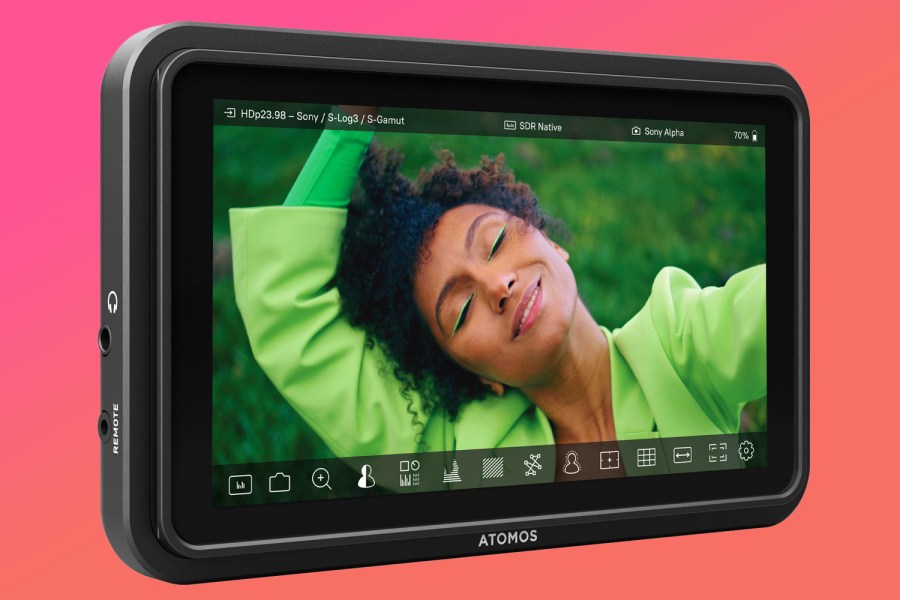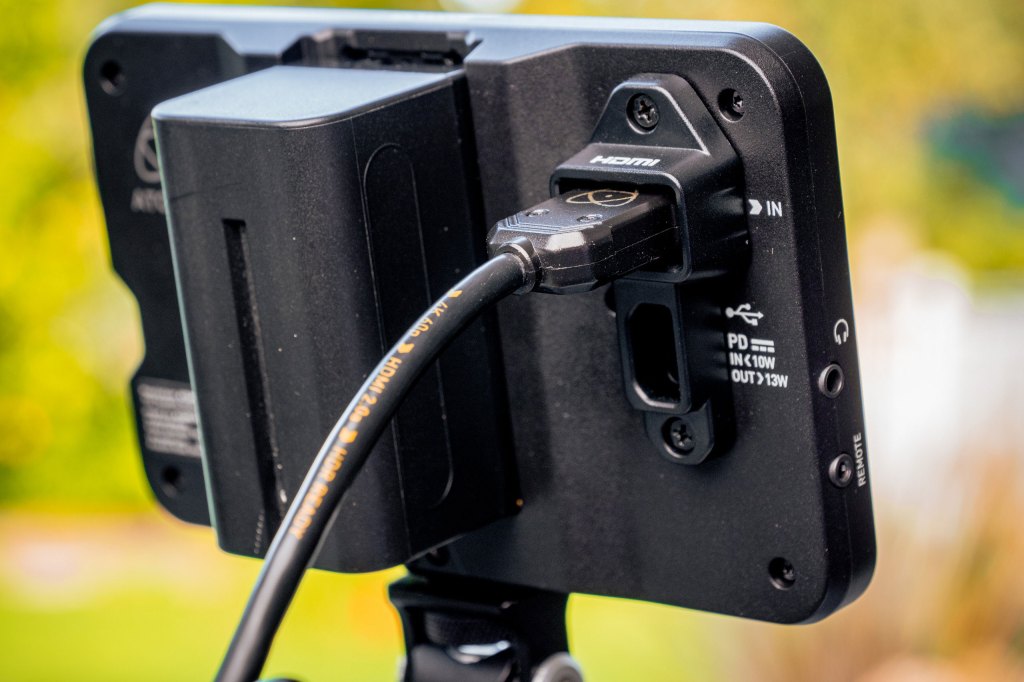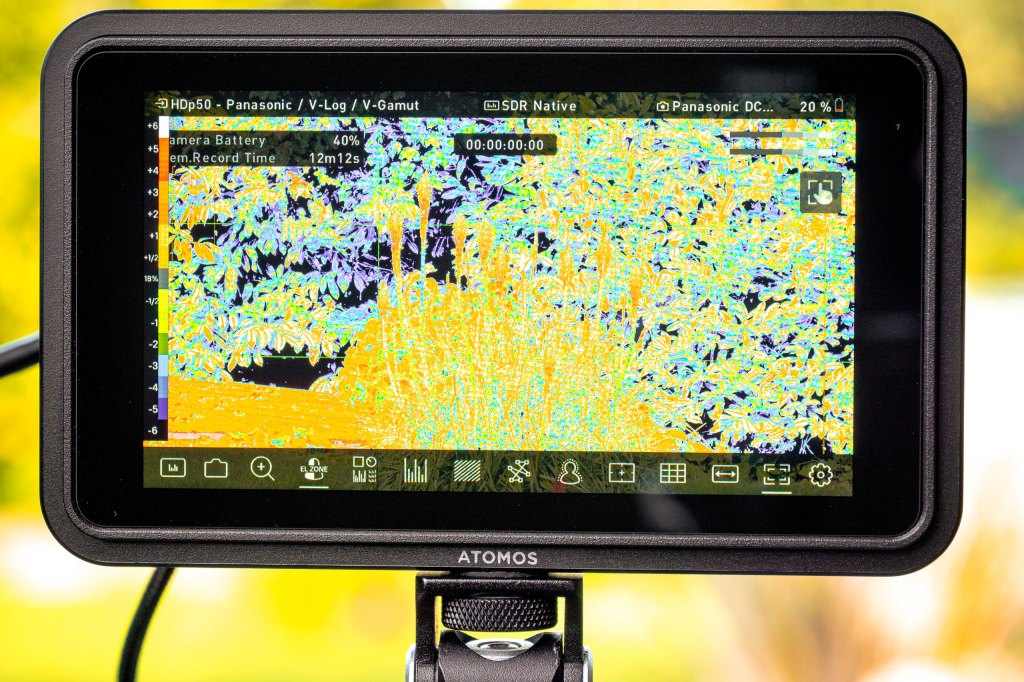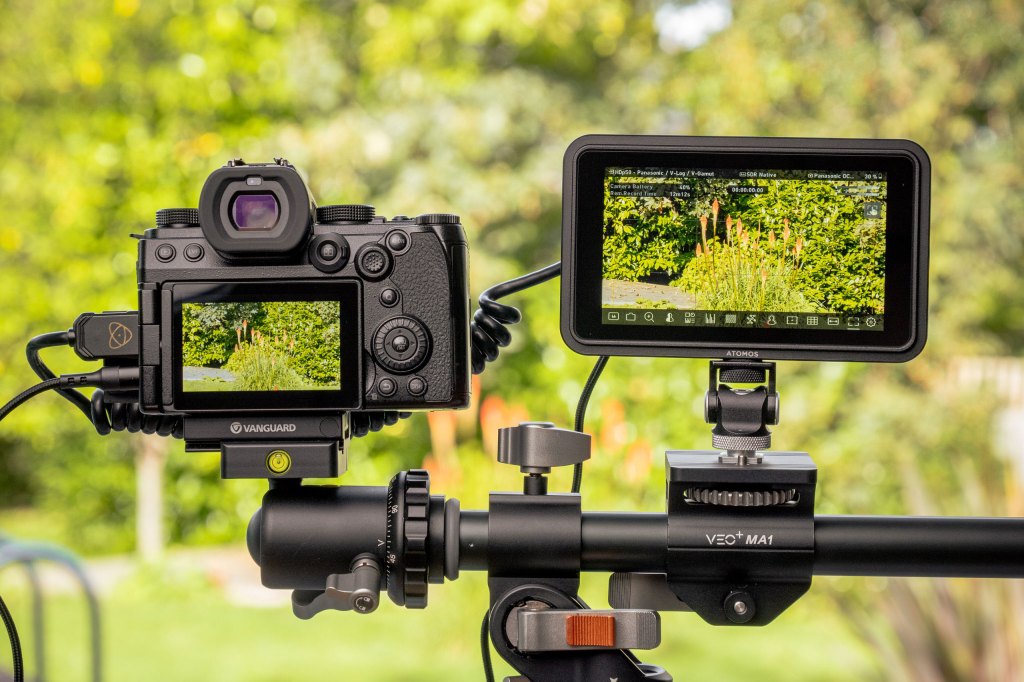Amateur Photographer verdict
An excellent 5in monitor thats inexpensive and brighter than most monitors on the market. The new camera control feature is a welcome addition however it needs fine tuning.- Very bright display
- Great monitoring display features
- Lightweight and slim design
- Good to have USB power in and out
- Camera Control not as good as it could be
- Takes a long time to power up
Atomos Shinobi ll – at a glance:
- $349 / £342
- 5in external monitor
- HDMI video connection
- Power via USB-C, battery or mains
- On-screen control of some camera features
- atomos.com
The Shinobi ll is the latest in the Atomos line-up of non-recording external monitors, and the third in the Shinobi series. The original Atomos Shinobi was like this – a 5in monitor for cameras with HDMI. The second, the Atomos Shinobi 7, is a relatively recent 7in version, but with both HDMI and SDI in/out ports. Here we are returning to the smaller format to provide DSLR and mirrorless camera users with a viewing screen that’s larger and brighter than the one that comes built in to the camera, and which offers a number of monitoring options to help us find the right exposure and focus via on-screen displays.
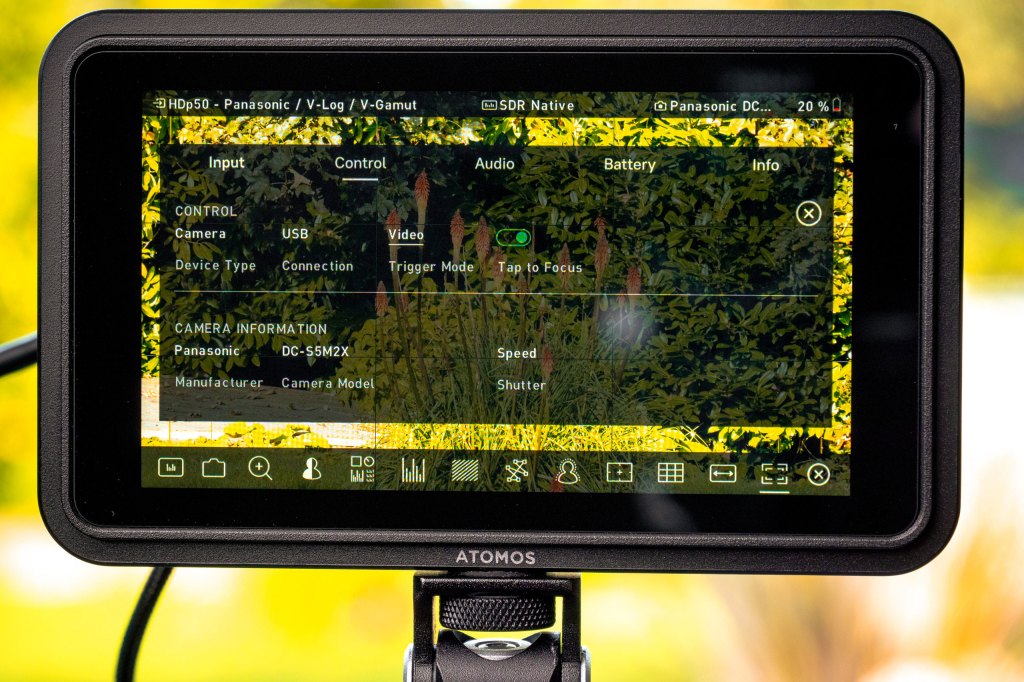
The added attraction this time, though, is that some more modern cameras can communicate settings information to the screen and we can control elements like the shutter, aperture, shutter speed and ISO directly from the monitor’s touch-sensitive surface. And, for a few users, touch focus has also been introduced – so, in theory, once this screen is connected there’s not too much we need to go to the camera to control.
Atomos isn’t the first to offer camera control in a monitor like this, and in fact, the company had the feature in its Shinobi 7, but only for one model of camera. With its USB-C connection this appears to be the most universal and simplest system we’ve seen so far.
Atomos Shinobi ll – Features
The key elements most first time monitor users concentrate on are the size of the screen and the brightness of the display, so the Atomos Shinobi ll comes with a 5.2in display with a maximum brightness of 1500 nits. The ‘nit’ brightness unit means candelas per square metre (cd/m2), so if this screen were a meter square, the intensity of the light we’d experience would be like looking at 1500 candles.
The previous version of this monitor was 1000nits, so this is quite a step up, and the extra intensity should make the screen easy to see when we’re shooting outside on a bright day. Generally 800nits is considered the starting point for an outdoor monitor.

Those who have used on-camera monitors before will want to know how bright it is, but will also be interested in how much weight and bulk it will add to their set-up. The answer is ‘not very much’. At 210g the new model is 14g heavier than the original, and weighs about the same as a large eating apple, a medium banana or an adult hamster.
It’s 10mm thinner than the original, and at 20.8mm, is only about the thickness of two mobile phones. The width and height of the unit remains as it was, at 151mm x 91.5mm, but in the slimming down we’ve lost the mount point that used to be on the top of the body. So now there is only the one on the base.
The display panel measures 5.2in across the diagonal and we have a resolution of 1920×1080 pixels – so Full HD. The viewing angle remains unchanged at 178° and we still have a 10-bit effect via an 8-bit display that modulates with the frame rate to show us all the tones we’d see in a 10-bit display.
While the original Shinobi monitor came in HDMI or SDI versions, the new model will only be offered with HDMI ports, as that’s what almost all mirrorless cameras use. The rear of the monitor has a single HDMI port alongside the new USB-C port that will be used for camera control. The USB port offers Power Delivery too, so it can send power to your camera, or alternatively we can power the monitor via this port.
Further power options include an NP-F battery, mains power and a dummy battery powered via the D-Tap port of a V-Lock battery. There’s an SD card slot for updating firmware and loading up to eight LUTs to the monitor, as well as a 2.5mm remote control port for a LANC connection to Z Cam cameras, and a headphone port for monitoring audio.
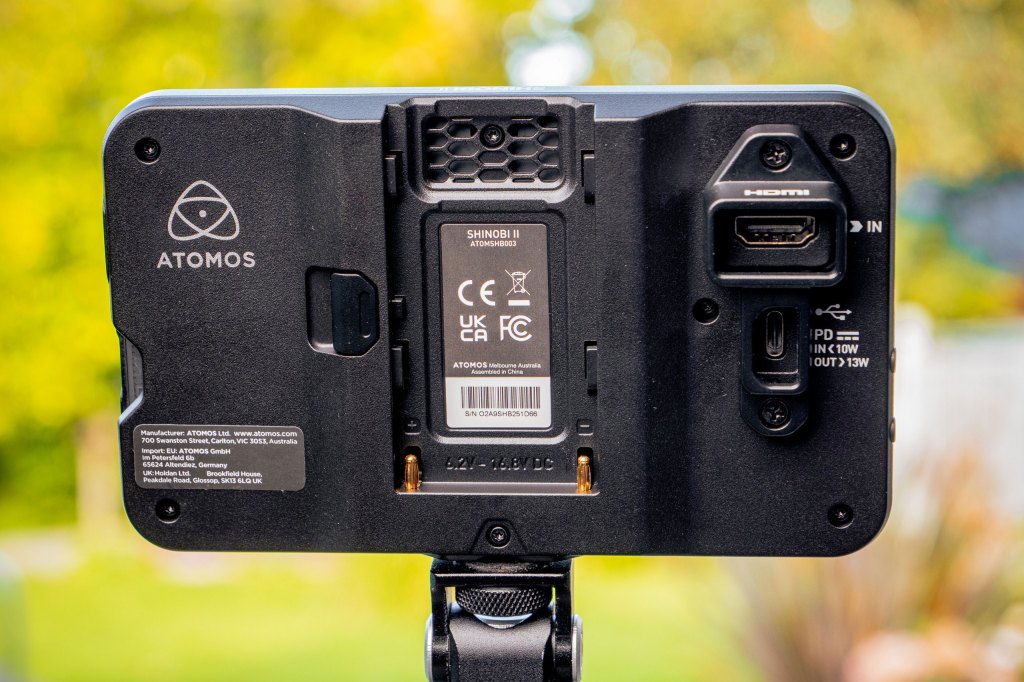
Atomos Shinobi ll – Camera Control and Display Options
Of course the big excitement in this new model is the ability to control certain elements of the camera directly from the monitor’s touch display. Compatible cameras are listed on the Atomos site, and there are lots of them, but expect to see mostly recent models.
When connected via USB-C the monitor offers to control aperture, shutter speed, white balance and ISO options, so we can adjust white balance on the monitor and the camera will take in the changes, for example. The monitor also provides a shutter button, so we can trip the shutter remotely too.
In really new camera models we can also control the AF point via the monitor – so we just touch the part of the subject we want focused and the monitor feeds the information to the camera which focuses for us.


The monitor also comes with all the standard and latest monitoring displays, including focus peaking, histogram, frame markers for different aspect ratios, false colour displays to help with exposure, and anamorphic desqueeze for 8 types of lens.
The monitor runs the latest Atomos OS so it also has the new Multiscope Analysis View that shows us lots of information in one go. As well as Atomos False Color we now have Arri False Color, and the EL Zone system that shows us coloured zones marked in stops to help us get the subject exposed to 18% grey.
Atomos Shinobi ll – In use
Even though the monitor is only 10mm slimmer than before, it feels a relief to add a monitor to a camera and not feel a dramatic increase in bulk, so the Atomos Shinobi ll is winning right from the start.
It sits as easily in a hotshoe as it does on its own stand or attached to a camera handle, and it isn’t going to tire your arm much sooner than the camera would on its own. Another winning feature is that the cable ports are now on the rear of the monitor so we don’t have cables hanging out the side, which makes things a lot neater.
The touch display is responsive and the menu, once you’ve used it for an hour or so, is pretty straightforward, as is the way we navigate the settings. There’s no fan in this model, so it runs silently. This silence would be entirely a good thing except the monitor takes so long to come to life when we switch it on it can be hard to know if we’ve pressed the on button for long enough. Atomos has a pretty frustrating on/off strategy in a lot of its products.

As exciting as it is to have camera controls in this monitor, the implementation feels a little basic. The controls are pretty small and the left/right arrows that change settings are hard to hit with accuracy.
The white balance settings are limited to kelvin colour temperatures, the monitor doesn’t always display shutter angle even if your camera can, and when we activate touch focus, the camera reverts to contrast detection AF so focus shifts are quite slow and we can’t track a subject.
I’m sure a lot of these things will be ironed out with firmware in time, but the whole thing doesn’t really equal what I expect from Atomos. Yes, we can control the camera, but it could have been done a lot better. It feels like it’s in the beta stages of development. It’s worth noting too that if you use this monitor with a wireless transmitter, you can only have camera controls if you have a long enough USB-C cable.
The display really is nice and bright, and the new monitoring displays are very useful – and easy to understand even for a newcomer.
Atomos Shinobi ll – Verdict
In my disappointment at the way camera control works, it would be easy to forget that the Atomos Shinobi ll is still an excellent 5in monitor. It’s well made, has great features, isn’t expensive and it is a brighter than a lot of other 5in monitors, plus it is lightweight, slim and well designed.
While camera control has taken all the headlines, it is still worth upgrading from the original to this model ll just for the extra brightness. If you’ve never had an external monitor before this will make the kind of start that will spoil you for all monitors in the future. But if you are considering upgrading just to get the camera control feature, I’d wait.

Related reading:
- Best external camera screens and camera monitors
- Atomos Shinobi 7 Review
- Best accessories for video
- 9 Common Video Problems and How to Fix Them

